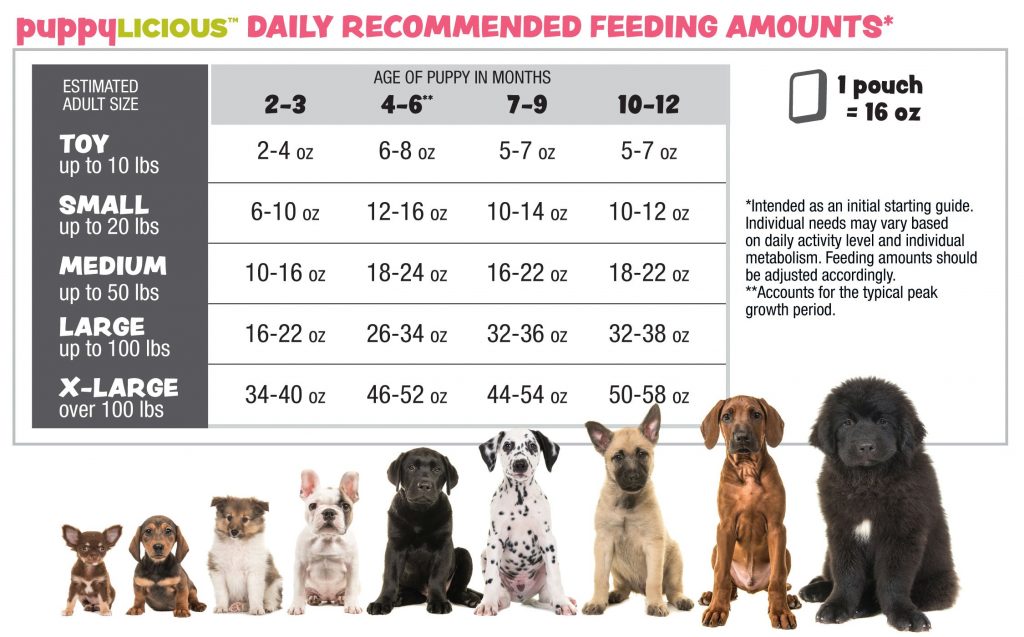
Feeding Amounts
Dog obesity is a growing concern in the veterinary community and has been linked to many health problems in dogs. Luckily for our pets, we are usually more disciplined about controlling their diets than we are about controlling our own. Knowing how much to feed your dog and what healthy dog weight looks like can be tricky. Many owners accidentally overfeed their pets, which is why it is important to take your dog in for regular checkups and to talk with your vet about appropriate portions. The guidelines on the back of the bag are just that – guidelines. Some dogs may require more than the recommended amount, whereas others require much less. Activity level, time of year, nursing, illness, and more factors can all impact how much a dog needs to eat. Dog people will often advise that you should “feed the dog that’s in front of you” instead of strictly adhering to dog food serving size guidelines that may or may not be exactly what your dog needs.
